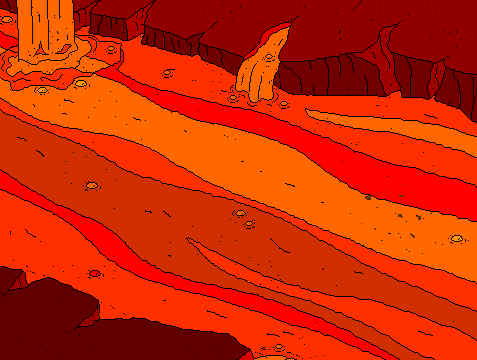![]() The Formation of Lava
The Formation of Lava![]()
![]()

During a volcanic eruption, magma rises to the surface of the crust and magma pours out
of the rims of volcanoes. The hot-red magma, when spilled out of the volcano, is known as
the lava.
Lava escapes from the volcano and would normally cascade down the volcano slopes. The lava
sometimes move fast, in thin sheets that would gush down at a speed of 64 kilometres per
hour. Otherwise, it flows down slowly in thickwaves, and often move slowly.
The lava sometimes move underground to be squeezed through tunnels and comes out at the
surface of the crust. This tunnels are formed by rivulets of lava. The surface of
the lava cools rapidly and hardens, forming an outer shell. However, in the inside of
them, the protected lava continues to flow. The leading edges of such lava flows are
called
paws or snouts.
The lava will run along the shorelines in tongues and they will be often divided into
smaller trails of lava which will most likely be sucked out to sea. The lava will cool
down
and after years, the lava will be smashed into smaller finer pebbles and pieces and form a
beach of black sand.
Lava added beaches and they will also extend the surface area of an island.